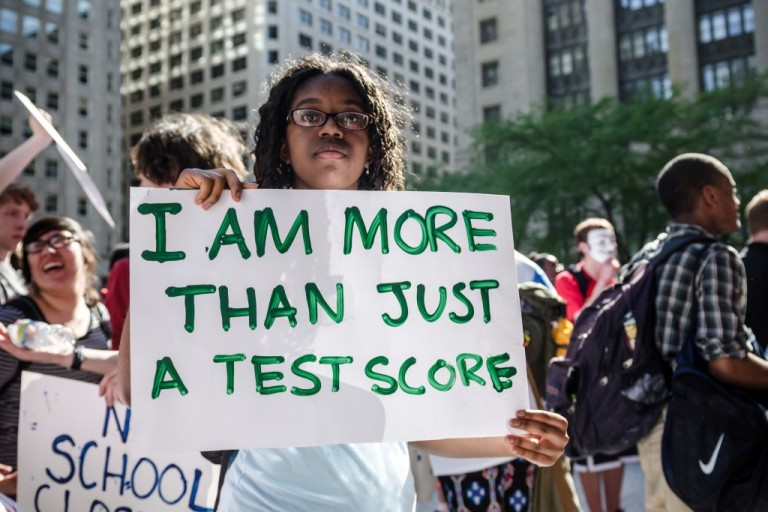Standardized testing in U.S. schools has been a major part of the education system for many years. These tests are designed to measure how well students learn, how effective teachers are, and how schools perform in a consistent way across the country. However, the impact of standardized testing is a subject of ongoing debate among educators, parents, and policymakers. This article explains what standardized testing is, how it affects students and schools, and the challenges it brings to American education.
What Is Standardized Testing?
Standardized testing refers to exams that are given and scored the same way for all students. The goal is to ensure fairness and consistency when evaluating students no matter where they live or go to school. Common examples of these tests include state assessments, the SAT, ACT, and Advanced Placement (AP) exams.
These tests usually focus on core subjects like math, reading, science, and writing. The results are used to make decisions about student progress, teacher performance, and school funding.

Why Was Standardized Testing Introduced?
Standardized testing became widely used in the United States during the 20th century to improve education quality and ensure fairness. The federal government increased the use of these tests through laws like the No Child Left Behind Act of 2001. This law required schools to test students regularly to make sure all children, regardless of their background, met certain academic standards.
The purpose was simple: to measure what students know, identify schools that need help, and hold schools and teachers accountable for student learning.
Positive Effects of Standardized Testing in U.S. Schools
Objective Measurement of Student Learning
One key advantage of standardized testing is that it provides a clear and objective way to see how well students understand important subjects. This information helps teachers find areas where students need more help and adjust their teaching methods accordingly.
Accountability for Schools and Teachers
Standardized tests create data that hold schools and teachers accountable. Schools that consistently perform poorly may receive extra help or face consequences, which encourages improvement and better use of resources.
Identifying Achievement Gaps
Because these tests are the same for everyone, they can show differences in achievement between groups of students. This allows schools and policymakers to focus on helping students who may be struggling or come from disadvantaged backgrounds.
Preparing Students for Future Challenges
Tests like the SAT and ACT help colleges compare students from different schools using a common standard. They also prepare students for future tests and work situations where clear evaluation is important.
Challenges of Standardized Testing in U.S. Schools
Teaching to the Test
A common criticism of standardized testing is that it causes “teaching to the test.” This means teachers spend much of their time preparing students for the test instead of providing a broad and creative education. This can limit critical thinking and reduce opportunities for deeper learning.
Stress and Anxiety for Students
High-stakes tests can cause significant stress and anxiety for many students. The pressure to do well on these tests may negatively affect students’ mental health and decrease their motivation to learn.
One-Size-Fits-All Does Not Fit All
Standardized tests often do not account for different learning styles, cultural backgrounds, or special needs. This can unfairly disadvantage students with disabilities, English language learners, or those from diverse cultures.
Impact on Teacher Evaluations
Using standardized test scores to evaluate teachers is controversial. Many argue that test results do not fully reflect how effective a teacher is and can unfairly penalize teachers working in schools with more challenges.
Widening Resource Gaps
Schools in wealthier areas tend to have higher test scores because they have more resources, support, and access to test preparation. This can increase the gap between well-funded schools and those in poorer communities instead of closing it.

Alternatives and New Approaches
Educators and policymakers are exploring alternatives to traditional standardized testing. These include:
- Portfolio assessments where students collect their best work over time to show what they have learned.
- Performance-based assessments such as presentations and projects that test skills beyond multiple-choice questions.
- Formative assessments that regularly check student understanding without the pressure of a big test.
- Adaptive testing that adjusts the difficulty of questions based on how a student answers.
Many experts believe a balanced approach that combines standardized testing with other forms of evaluation gives a more complete picture of student learning.
How Schools Can Balance Testing and Learning
To reduce the negative effects of standardized testing, schools can take several steps:
- Limit the amount of time spent on testing to protect instructional time.
- Use test results as just one of many tools to guide decisions about students and teachers.
- Train teachers to develop lessons that go beyond test preparation and encourage critical thinking.
- Provide support for students’ mental health to help them manage test-related stress.
- Involve parents and communities in discussions about the role and impact of testing.
Conclusion: A Complex but Important Tool
Standardized testing in U.S. schools is a complex and often controversial issue. It provides useful data for measuring student achievement and holding schools accountable but also creates challenges for teaching, student well-being, and fairness.
The key is finding the right balance. By understanding the benefits and drawbacks of standardized testing, educators and policymakers can work toward an education system that supports all students in learning and success.
Do Follow USA Glory On Instagram
Read Next – The Alarming Rise of Cancel Culture in the United States






